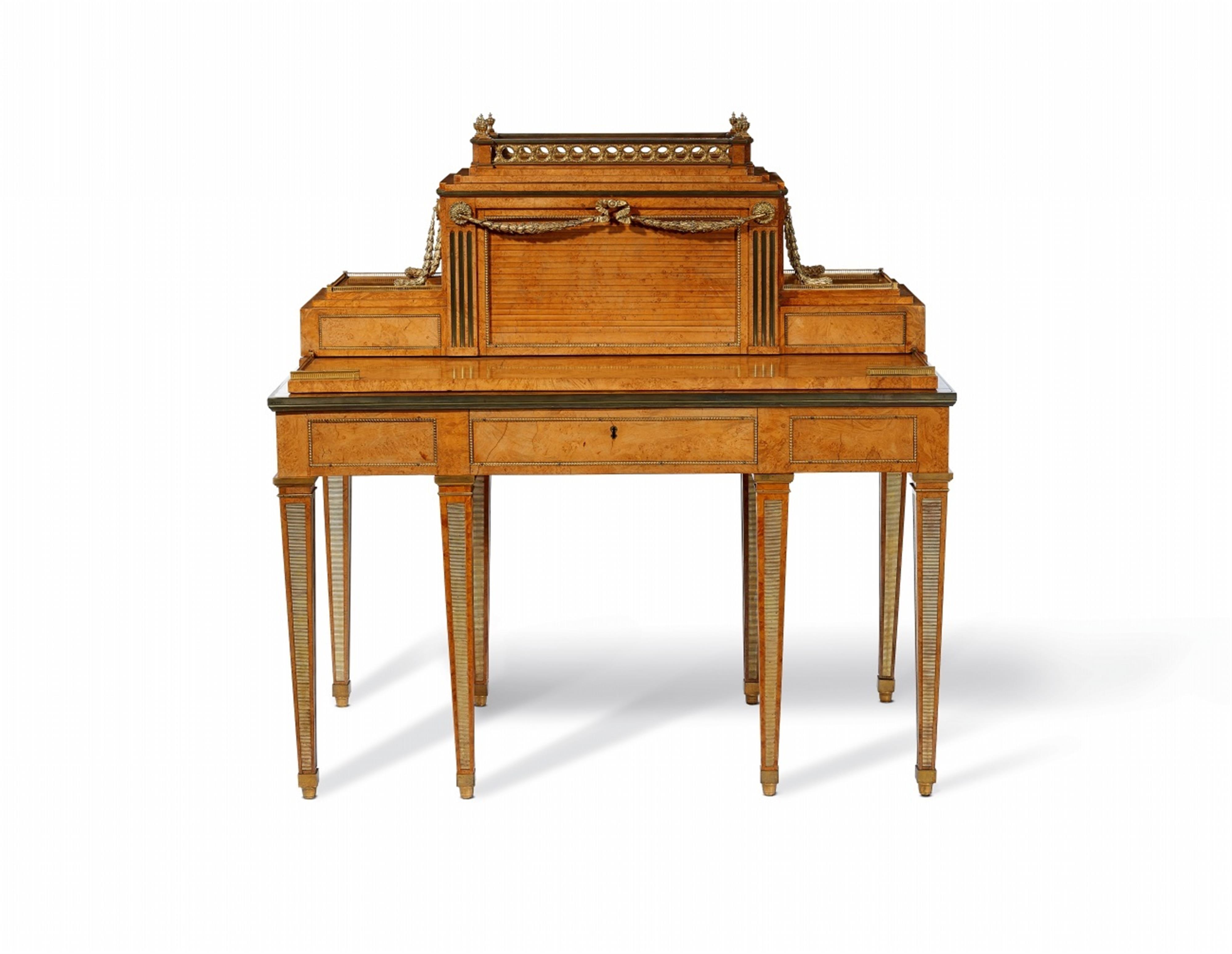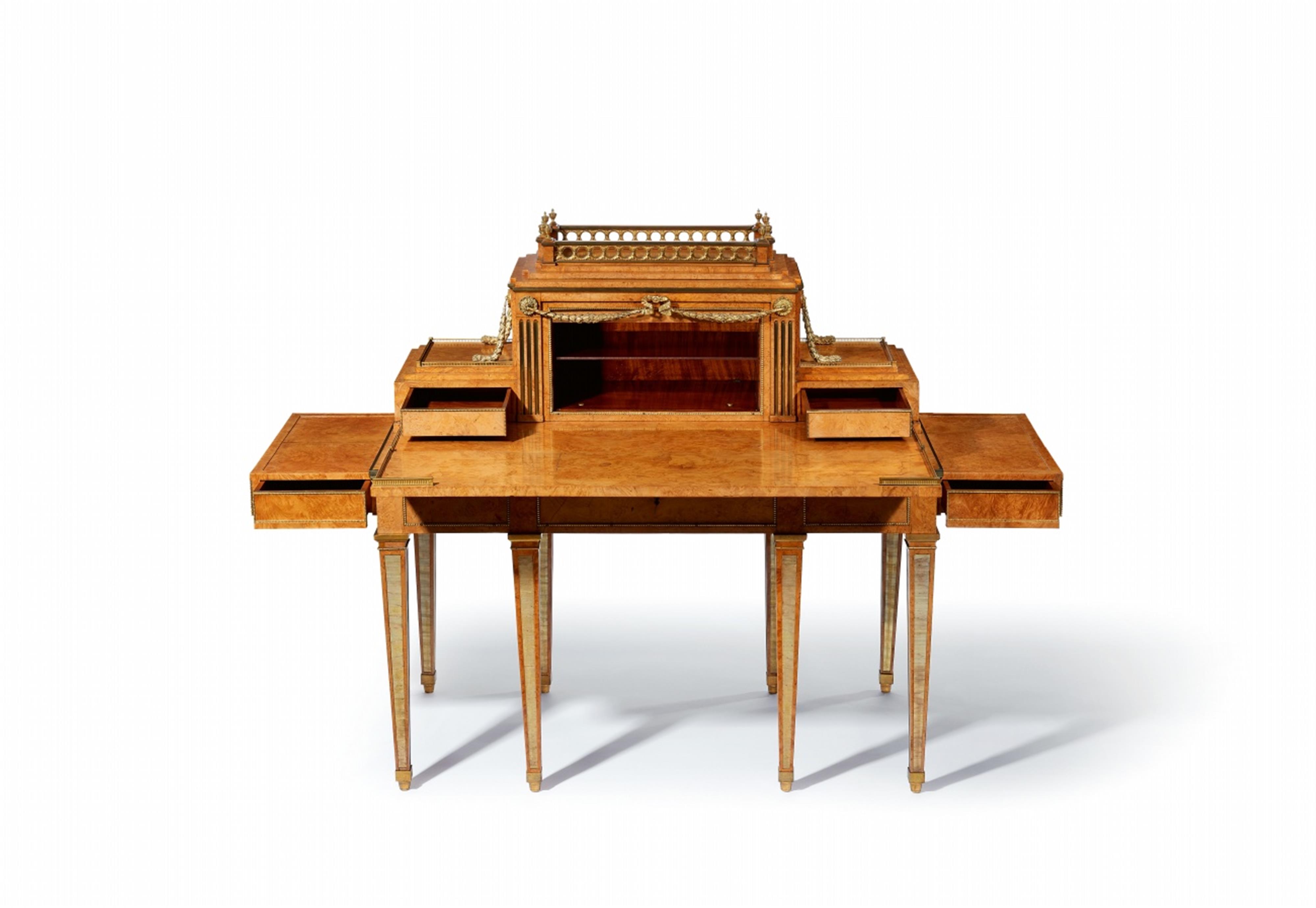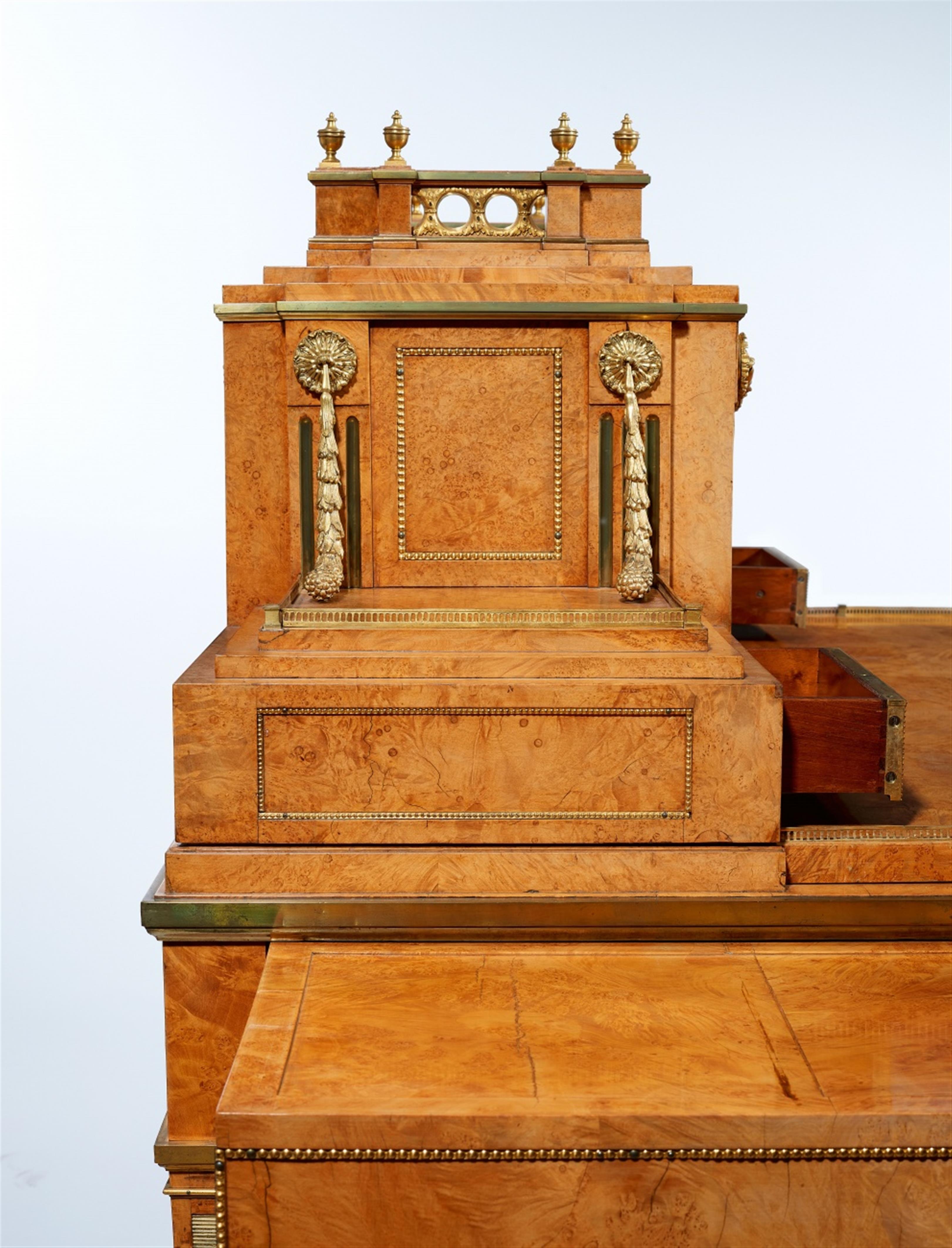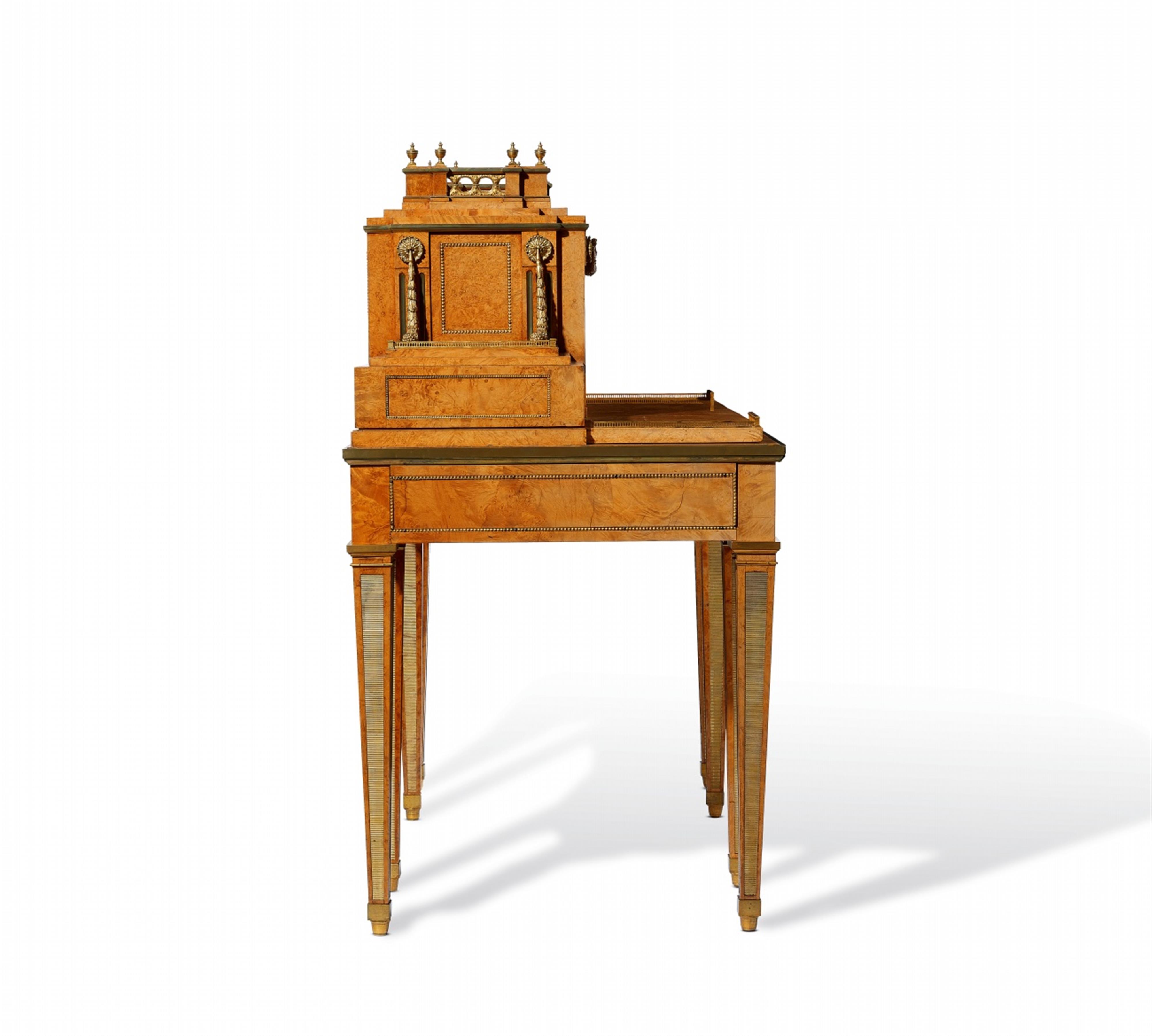An Imperial writing desk by David Roentgen
Thuja wood veneer on mahogany and oak corpus, ormolu and brass mountings. Multi-functional table on eight removable tapering supports of square section decorated on four sides with milleraie motifs. Straight apron with central drawer beneath a sliding top surrounded on both sides by a low bronze gallery. The architectural upper section with a large central compartment closed by a sliding blind and flanked by two shallow side compartments, each with a drawer with a spring mechanism. The right drawer with three compartments for inkwells. The top conceals two levers to open the drawers which extend out on either side. The entire piece decorated throughout with finely grained symmetrical wood veneer, the edges with beaded borders, each of the angles of the central compartment accentuated by brass-filled fluted motifs beneath rosette appliques. The central compartment surmounted by a gallery with pierced circular motifs and eight small baluster-form vase finials. The four central supports and the laurel swags supported by the rosettes of the central compartment are later additions. H 112, W 113, D 60.5 cm.
Neuwied, circa 1785.
Following the purchase of this work at auction in Monaco, the locked writing table was brought to the Bavarian National Museum, where the key from the parallel work was copied and used to open the piece. The lock, with its double-trefoil form escutcheon, is located on the front of the central drawer - not directly hidden, but inconspicuous nonetheless. This piece derives its unique charm from its unusual details, the elaborate spring mechanisms used to open the hidden drawers, and its luxurious inner compartments furnished in shimmering red mahogany with fine, even grain. In Munich it was decided, upon the suggestion of restorers, to optically complete the piece. As its original appearance was not known, the comparison work in Munich was used as a model. Four central supports were added, identical to the Munich work, as was the central ribbon and the magnificent laurel festoons hanging from the rosettes. The screws used to attach the four new supports were made to fit the inner screw threads exactly so that they, like the original four supports, can also be removed for ease of transport. Thus, the restorers were able to create a kind of twin piece to the work in Munich, which differs only in minor details.
Provenance
Property of Emperor Wilhelm II, who purchased the desk shortly after the first world war.
Auctioned by Sotheby's Parke Bernet, Monaco, on 12th February 1979, lot 393.
Private collection, Rhineland.
Literature
Illus. in Fabian, Abraham und David Roentgen. Das noch aufgefundene Gesamtwerk ihrer Möbel- und Uhrenkunst in Verbindung mit der Uhrmacherfamilie Kinzing in Neuwied. Leben und Werk, Verzeichnis der Werke, Quellen, Bad Neustadt 1996, p. 148f, no. 184.
An almost identical second piece (formerly belonging to the estate of Duke Alexander Sergeyevich Stroganov, currently on permanent loan to the Bayerisches Nationalmuseum) ibid. under no. 185 and in Greber, Abraham und David Roentgen. Möbel für Europa, vol. 2, Starnberg 1980, illus. 693.
Cf. also: Greber, illus. 701 (a smaller ladies writing desk in the New Palace in Potsdam).








